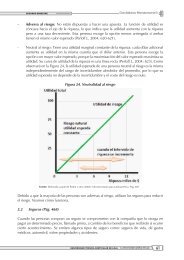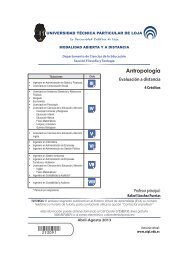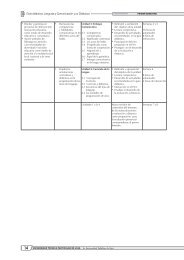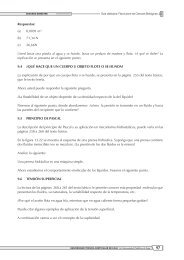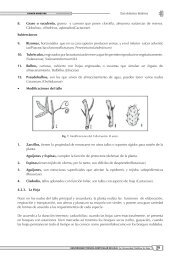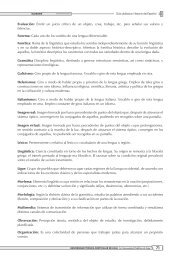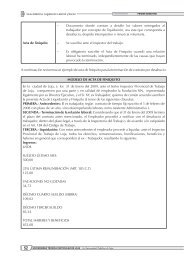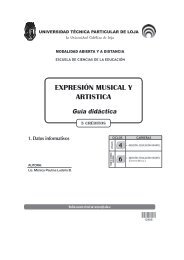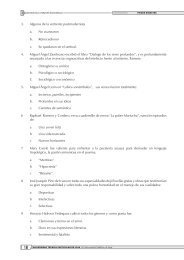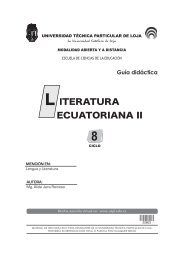Communicative Grammar III - Bad Request - Universidad Técnica ...
Communicative Grammar III - Bad Request - Universidad Técnica ...
Communicative Grammar III - Bad Request - Universidad Técnica ...
Create successful ePaper yourself
Turn your PDF publications into a flip-book with our unique Google optimized e-Paper software.
Guía didáctica: <strong>Communicative</strong> <strong>Grammar</strong> <strong>III</strong><br />
UNIT 3: MODALS AND SIMILAR EXPRESSIONS<br />
Until now you have studied the first half of the contents of the first bimester. It’s time to start a new unit<br />
that focuses on the modals and expressions of ability, permission, requests, advice and suggestions. The<br />
activities in the different sections of this unit include cloze, gap-fill, editing and writing exercises using<br />
the aforementioned structures.<br />
Let’s review the first topic.<br />
3.1. Ability: Can, Could, Be able to<br />
At the beginning of this unit you will have to do the “Before you read” activity in your textbook. Then read<br />
the article called “Born to dance” and do the “After you read” activity. Don’t forget to focus your attention<br />
on the words in bold letters. These words are related to the grammatical structures to be studied. If you<br />
like this article, the following exercise will help you understand it better.<br />
Exercise:<br />
What dream did Verdi-Fletcher achieve?<br />
_______________________________________________________________<br />
Why did people think she wouldn’t be able to achieve her dream?<br />
_______________________________________________________________<br />
How did people react when she danced in her first competition?<br />
_______________________________________________________________<br />
How has Verdi-Fletcher changed the definition of dancing?<br />
_______________________________________________________________<br />
What does she want to show through her dance?<br />
_______________________________________________________________<br />
It was easy, wasn’t it? Now compare the words in bold letters with the structures presented in the<br />
charts in the “<strong>Grammar</strong> Presentation” section. Are they similar? The answer should be “yes”. For a better<br />
explanation of these modals read the “<strong>Grammar</strong> Notes” section in your textbook.<br />
After a comprehensive reading of the sections mentioned above you are ready to do the exercises in the<br />
“Focused Practice” and “Communication Practice” sections in your textbook. These activities will surely<br />
help you understand this topic.<br />
Let’s continue with more modals in the following topic.<br />
3.2. Permission: Can, Could, May, Do you mind if<br />
As you advance throughout this topic you will see that the focus here is on ways to ask permission and<br />
give and refuse permission. First, it is necessary that you do the activities “Before you Read” and “After<br />
you Read” which are related to the article “Always Ask First” in your textbook. Then by doing the following<br />
exercise you will have a better understanding of the article:<br />
UNIVERSIDAD TÉCNICA PARTICULAR DE LOJA La <strong>Universidad</strong> Católica de Loja 28



